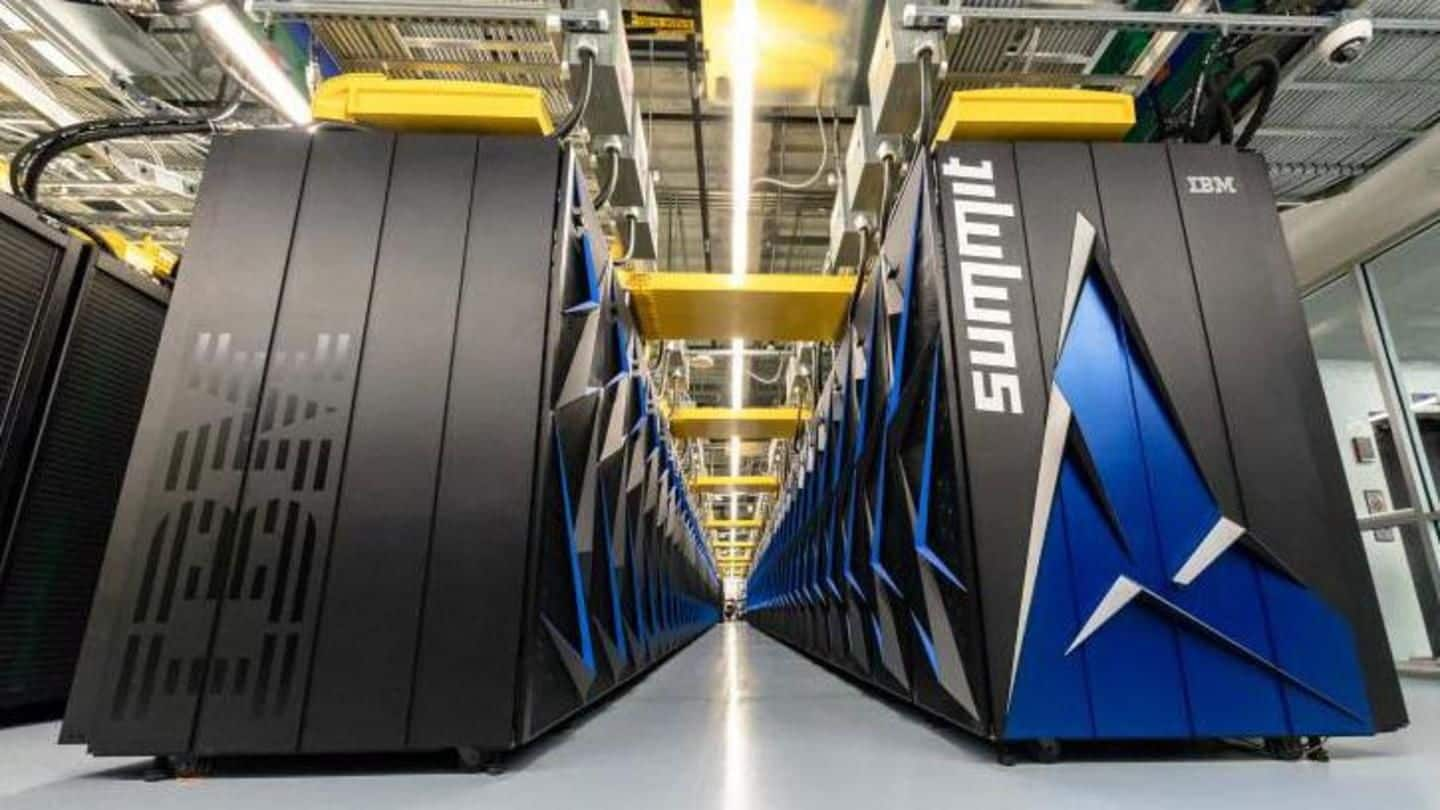
Meet IBM's Summit, the world's most powerful supercomputer
What's the story
The US has retaken its place as the country with the most powerful supercomputer after the Department of Energy, on Friday, unveiled the new IBM-made Summit.
Summit, which replaces previous-record holder, China's Sunway TaihuLight, can run 200 quadrillion calculations per second, is almost the size of two tennis courts, and consumes water and electricity like a small town.
Here's more on this beast.
Specs
The computer with the appetite of a town
Summit has 4,608 servers or interconnected computer nodes, which take up the size of two tennis courts, and has a cooling system which consumes 4,000 gallons of water a minute.
Each node has two 22-core IBM Power9 chips running at 3.1GHz, coupled with six NVIDIA Tesla V100 graphics chips.
Summit consumes 15 megawatts of power at peak capacity - enough to power 8,100 homes.
Information
What Summit can do, simply said
If the numbers baffle you, here's some perspective. Summit has 100 times the memory of a high-end laptop, and around 1,000 times the storage capacity. Summit can, in an hour, complete a task which would take 30 years for a desktop computer.
First step
Summit: The first step to a supercomputer ecosystem for research
Summit, with its 1.88 exaop record, was built for artificial intelligence operations using machine learning and deep learning to power research across various fields from Physics to health-care.
For those unaware, an exascale calculation or one exaop is one billion billion calculations per second.
It's the first step towards the US' vision of a fully capable exascale computing ecosystem for research by 2021.
Quote
Summit has opened up a new frontier in science
"Summit is enabling a whole new range of science that was simply not possible before it arrived," said Dan Jacobson, a computational biologist from Oak Ridge National Laboratory, the lab where Summit is housed.
Research
Upcoming research projects where Summit will be used
Upcoming projects include running simulations on superconductors and analyzing exploding stars (supernovae) to find out how elements like gold moved across the universe.
Additionally, Summit will also crunch massive amounts of health data to look for relationships between cancer and factors like genes, environment, etc.
It'll also be used for climate modeling, exploring new materials, investigating nuclear fusion, and more.